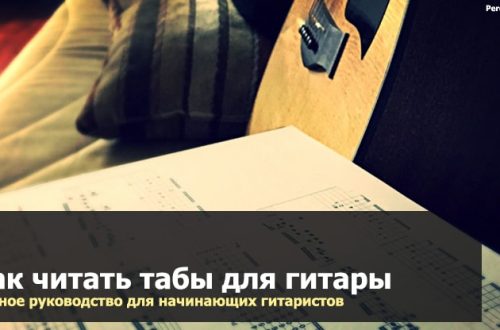
How to improvise on the guitar. Tips for beginner guitarists.
Contents

Improvisation on the guitar. What will be discussed?
Guitar improvisation is one of the cornerstone themes of musical skill. There has already been a huge amount of talk on the subject of this issue, and almost every eminent guitarist has his own opinion on this issue. And it is true – after all, it is in improvisation that music is born, it was improvisation that created a huge number of famous compositions.
Moreover, a huge number of performances and shows have been built on it – in rock music, often famous performers do not replay their solos live, but come up with some new ones, and some of them become truly legendary. A whole genre is built on improvisation – jazz, which is fundamentally different from all other music.
And seeing this, any novice guitarist will wonder – is it difficult? We have to be honest – yes, improvisation is really difficult. However, it is not as difficult as many say. A simple game does not require huge musical knowledge, five years of school, and such things. It will be enough just to work a little with your head and make out what you already know – however, more deeply. And then after a couple of days guitar training you will be able to play your first impromptu solos and compose your own songs!
Easy tutorials for beginners
Without knowledge of scales and notes
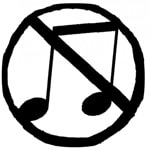
How so?
Chords. The whole secret is in them. In fact, the designations of chords are the notes from which they are built. That is, A – denotes the note La, plus an additional two sounds, a third (small or large) and a fifth. This is the third and fifth degree from the note A, but you won’t even need this terminology.
A small digression into the theory.
It will not be very difficult, but will be extremely useful for your development. So, there are only 12 notes. These are seven full notes – do (C), re (D), mi (E), fa (F), salt (G), la (A) and si (B), plus five more intermediate ones – denoted with the so-called “Sharp”. There are five intermediate notes, because there are none between Mi and Fa, as well as Si and Do.

Between full notes there is a gap in the so-called tone – on the guitar these are two frets. That is, between all the seven sounds listed, the distance will be in two frets – except, respectively, Mi and Fa, and Si and Do – in this case, the gap will be one fret.
Now take your guitar and play a chord E – Mi. Now, without changing the position, move it one fret up – that is, now the strings will be clamped on the second and third, and not the first and second. And on the first place barre. What happened? That’s right – chord F. Now move the entire position two frets – that is, the third. you put the chord G.
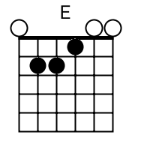
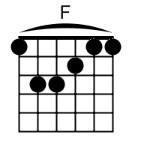

And it works with all other positions. If you move Am two frets and barre on the second, you get a Bm chord. And so on.
It is called “chord shapes” and it works with all the positions you put in when you play so-called beginner chords. If you can learn this thing, then you will have a huge scope for improvisation with chords.
Moreover, all seventh chords, all triads with raised steps, also obey this rule. Therefore, the first thing to learn in order to compose your own songs is precisely the forms of chords. It will also help you learn fretboard notes – just look at the name of the triad, and pay attention to which string sounds the very first when played – and that is exactly what the note will be.
Pentatonic is easy!
But for this, you already have to learn a little about what gamma is, because without it it is impossible to understand what pentatonic scale is. Again, this won’t be too hard, as the basic gist can be understood from the previous section.
So we know that all notes are separated by a tone or, in two cases, a semitone. In essence, a scale is a sequence of consecutive notes arranged in a certain order. The very first note in the scale is called the tonic.
Gamma C major
The major scale is built according to the principle: Tonic – tone – tone – semitone – tone – tone – tone – semitone.
That is, the C major scale looks like this:

Do – re – mi – fa – sol – a – si – do.
Gamma A-minor
The minor scale is built according to the principle: Tonic – tone – semitone – tone – tone – semitone – tone – tone.
In this case, take the minor scale A:

A – si – do – re – mi – fa – sol – a.
Each of the notes that are used in the scale is called a degree – there are eight in total. This is the classical rule from which the pentatonic scale departs. There are five notes in the pentatonic scale, since it lacks two steps. In the major case, these are the fourth and seventh, in the minor case, the second and sixth.
Pentatonic in C major
That is in order to build a pentatonic scale, you just need to remove two notes from the scale.
In such a situation, the pentatonic scale from C major looks like this:

Do – re – mi – sol – la – do
Pentatonic A minor
From A minor like this:

La – do – re – mi – sol – la.
Therefore, in order to build a pentatonic scale, you just need to understand what note on the fretboard you are currently playing, select a scale for this note – which is very simple if you follow the scheme – and then remove the necessary steps from it. Of course, this will take time, but it is simply necessary for rock improvisations, and also to resolve the issue – how to play beautiful guitar solos.
jazz improvisation on guitar

Blues guitar improvisation
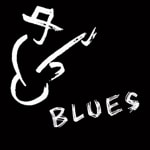
Guitar improvisation – everything you need to know
But after all, the beginning of the article promised that there would be a minimum of theory! And rightly so – on this we will close this topic. Now we will give some tips for beginners that can be applied to the game. beautiful busts,and solo parts, and chord positions.
Play more, learn more

Explore each song

Start simple

For example, simple guitar picking diagrams for which are presented on this site. The compositions of the Blackmore’s Night band, or classical works in general, are also perfect.
For solo practice and the beginning of improvisations, AC / DC songs, for example, or compositions of the Offspring and Green Day teams are suitable.
Chord songs can be found on this site – just take a regular triad track for beginners.
Listen more

Listen to songs more often
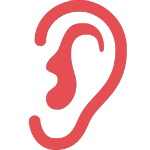
Learn Theory




